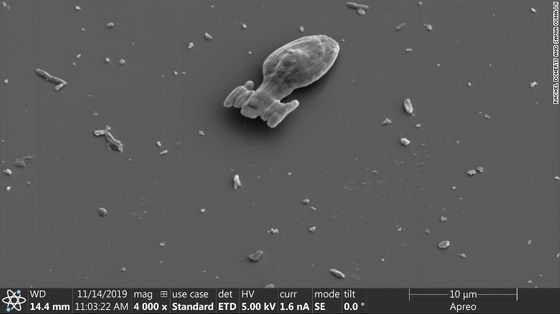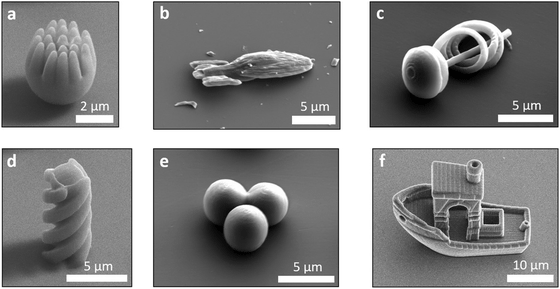A 'Star Trek spacecraft that swims on its own' with a long side of only 0.015 mm is generated by a 3D printer

Dutch physicists have created a miniature spacecraft with a long side of only 0.015 mm using a 3D printer, imitating the fictional spacecraft '
Catalytically propelled 3D printed colloidal microswimmers --Soft Matter (RSC Publishing)
https://pubs.rsc.org/en/content/articlelanding/2020/sm/d0sm01320j#!divAbstract
Scientists 3D print microscopic Star Trek spaceship that moves on its own --CNN
https://edition.cnn.com/2020/11/08/us/star-trek-3d-microscopic-spaceship-scn-trnd/index.html
This microscopic 3D-printed Star Trek Voyager can move on its own --The Verge
https://www.theverge.com/2020/11/3/21548150/microscopic-3d-printed-star-trek-microswimmer
The miniature USS Voyager was created with a 3D printer by a group of soft matter physicists such as Rachel P. Doherty of Leiden University in the Netherlands. Soft matter physics is the academic field of analyzing the shape and structure of 'soft substances' such as macromolecules , liquid crystals, colloids , biomembranes, and biomolecules. Doherty et al. In order to study about, we conducted an experiment to create a miniature model with a 3D printer.
When Samia Ouhajji of the research team told Jonas Hoecht about the miniature model used for research, 'You can print your favorite shape,' Hoecht was a big fan of Star Trek, a famous sci-fi drama masterpiece. He adopted USS Voyager as a model. The research team thus created a USS Voyager with a long side of 0.015 mm (15 micrometers) with a 3D printer.

The USS Voyager that appeared in Star Trek navigates outer space with impulse drive and warp drive, but the created miniature version of USS Voyager is in an aqueous solution due to the chemical reaction generated by the platinum coating and the hydrogen peroxide solution injected inside. Can be navigated.
In addition to USS Voyager, the research team also creates miniature models of shapes such as boats and spirals. Using miniature models of these various shapes, the research team is analyzing the effect of shape on particle swimming.

The research team will deepen their understanding of the question of how micro-organisms such as sperm and bacteria and micro-substances such as in-vivo chemicals move in the body, which may be useful for therapeutic diagnosis and drug transmission. 'It could help develop microrobots that swim autonomously and deliver drugs to their desired location in the body,' said Ouhajji.
Related Posts:
in Science, Posted by darkhorse_log







